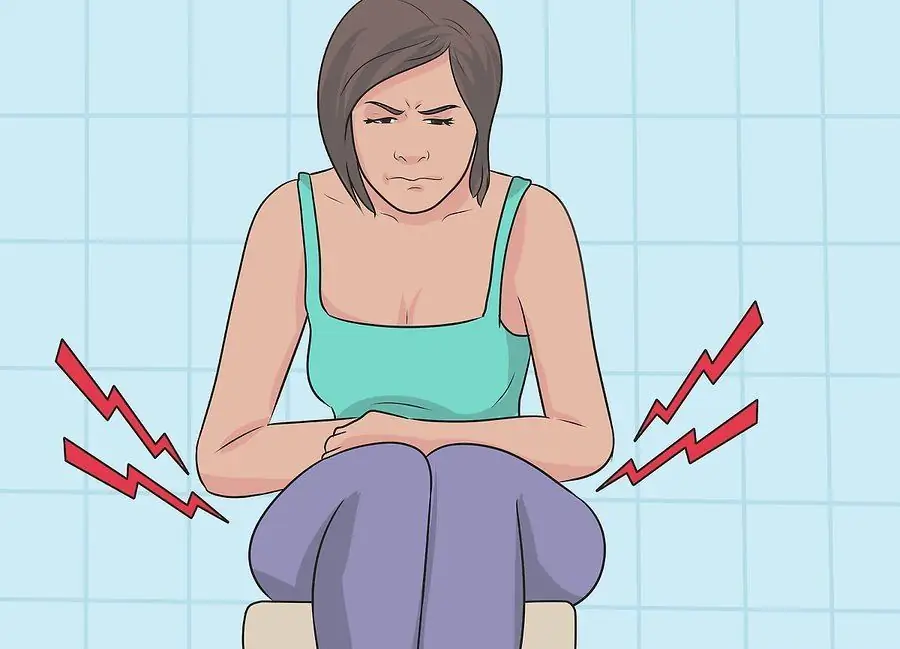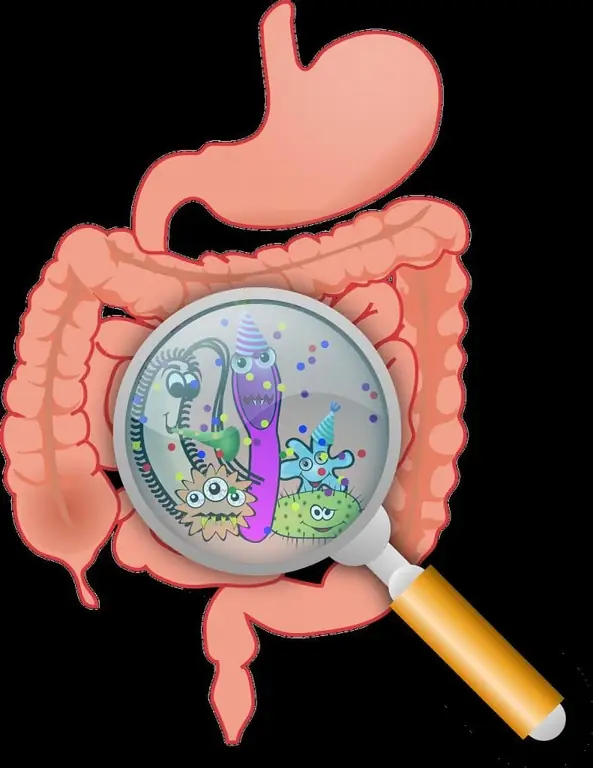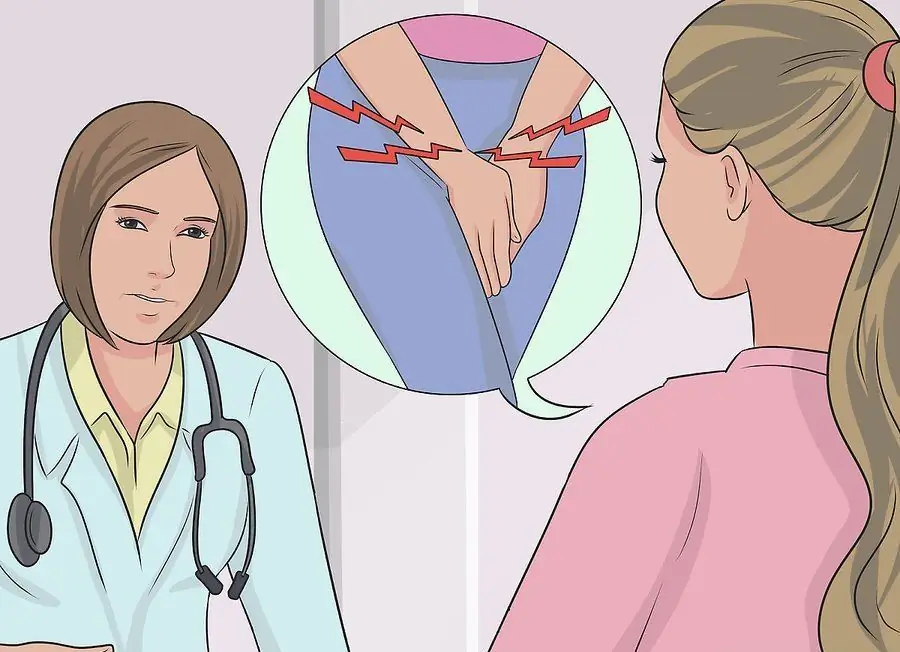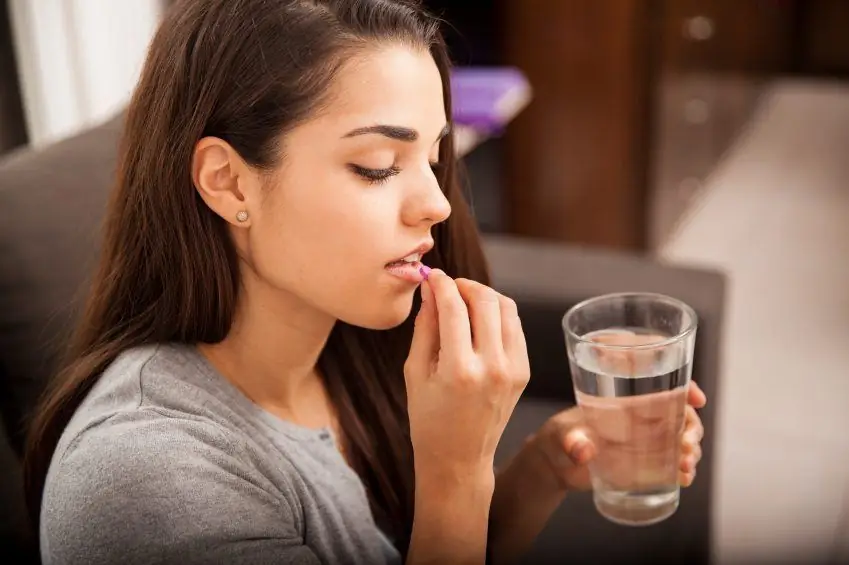- Author Curtis Blomfield [email protected].
- Public 2023-12-16 20:44.
- Last modified 2025-01-23 17:01.
According to statistics, approximately 25% of the fair sex at least once in their life is faced with such an unpleasant disease as bacterial cystitis. In other words, every fourth woman is exposed to this pathology once, and 10% of them suffer from a chronic form of the disease. But we are talking only about those ladies who sought medical help. With unreported data, this already impressive number is likely to be even higher.
Some information
Due to the piquancy of this problem, many women are simply embarrassed to discuss it, preferring to remain silent about her presence at the gynecologist's appointment. Suffering from signs of bacterial cystitis in combination with discomfort in the vaginal area, ladies simply do not understand which specialist should be contacted. And some even begin to suspectthe presence of a sexually transmitted disease and are even more ashamed of their condition, significantly exacerbating the problem. And only when it becomes simply impossible to endure the manifestations of cystitis, women resort to medical help. But often by this time it becomes too late - you have to pay for the mistake you made for years.
General information
Bacterial cystitis is a pathology of the bladder, which is accompanied by inflammation of its mucous membrane. This defect is provoked by the penetration of pathogenic microorganisms into the organ and their active development. It is their vital activity that entails the appearance of inflammation and its characteristic symptoms.

Bacterial cystitis is considered the most common type of this pathology. It arises, as a rule, against the background of the settlement of colonies of bacteria in the urinary ducts. The disease is provoked by saprophytic staphylococcus or E. Coli.
Most often, the defect is diagnosed in women of childbearing age, although both children and men are also quite susceptible to cystitis. Bacterial infections of the genitourinary system often appear in women due to intimacy. Active sexual intercourse is often accompanied by the penetration of bacteria from the vaginal microflora into the urethra, and then into the bladder itself. This is followed by an inflammatory response. But even in the absence of a sexual life, women are always at risk due to the anatomical features of the structure of the urethra.
Symptoms of bacterial cystitis
There are some of the most common signs of this vice:
- Constant urge to urinate. They can disturb the patient extremely often, in some cases even 6 times in an hour.
- To empty the bladder, the patient has to make some effort. Only a few drops may come out.
- During the emptying of the bladder, a person may feel pain and burning. These unpleasant symptoms can disturb the patient in between visits to the toilet. But at the same time, the nature of pain sensations changes slightly. If at the time of urination they are sharp, then at other times they are aching and pulling. For the most part, the lower abdomen hurts, the area above the pubis, sometimes it radiates to the perineum or tailbone.
- Sometimes there is an increase in body temperature and vomiting. In particular, such signs often disturb patients with kidney damage.
- Streaks of blood and pus may be present in the urine, indicating an acute form of pathology. In such a situation, seek medical attention immediately.

Reasons
This pathology arises against the background of the penetration of certain pathogenic bacteria into the bladder. In a he althy person, this organ is completely sterile. Bacterial cystitis can be caused by different types of mycobacteria.
- E. coli. It is always in the intestines of every person, without leading to the development of any diseases. This isdue to the activity of lacto- and bifidobacteria, which restrain the harmful effects. However, when entering the bladder with a sterile cavity, Escherichia coli begins to multiply rapidly. This is what causes inflammation. Many different conditions can contribute to this: systematic disregard for the rules of personal hygiene, hypothermia, a decline in immunity.
- Saprophytic staphylococcus. It turns out to be a provocateur of the disease much less often, but it is considered more dangerous than E. coli. After all, saprophytic staphylococcus is highly resistant to antibiotics. The bacterium can provoke regular relapses and is a prerequisite for the development of numerous complications. Penetrating into the integral mucous membrane, staphylococcus does not entail inflammation. Pathology occurs only when the surface of the organ is damaged. And this can happen at the moment of intimacy due to violent friction. No less dangerous analogue of this bacterium is Staphylococcus aureus. Hospital bacterial cystitis poses the greatest threat, which occurs when a person is in hospital, when the body is severely weakened.

Less common pathogens
Also contribute to the occurrence of the disease:
- Protea. These microorganisms also inhabit the intestines and can only provoke disease when they enter the bladder, where no one is able to resist them. In addition to cystitis, proteas are oftencause pyelonephritis. In addition, their vital activity contributes to the formation of stones.
- Klebsiella. They inhabit the intestines, skin and feces. Able to provoke the occurrence of pathology only under certain conditions. Bacterial cystitis due to infection with this microorganism develops extremely rarely - in only 4% of all cases.
- Enterococci. In the normal state, they are always present in the intestine. These microorganisms are capable of provoking the disease only after coming out of there. But they also extremely rarely cause a defect - only in 4% of cases.
Treatment of bacterial cystitis in women
Drugs of various spectrums of action are prescribed to patients only after a thorough diagnosis. Only laboratory tests can show the initial cause of cystitis and what kind of bacteria the bladder is infected with. After all, this is the only way to determine which particular drug pathogenic microorganisms are sensitive to. In some cases, to eliminate the harmful microflora, it may be necessary to use several medicines from different antibacterial categories.
For the treatment of bacterial cystitis in women, the following drugs are most often used:
- "Nevigramon".
- "Levomycetin".
- "Nitroxoline".
- "Monural".
- "Urosulfan".
- "Nolicin".
- "Amoxicillin".
- "Furadonin".
- "Ampicillin".
- "Nevigramon".
- "Furagin".
- "Sulfamidetoxin".

Features of therapy
Many doctors prescribe "Monural" to their patients, because it is it that has a broad bactericidal effect. Thanks to its use, a woman experiences significant relief after just a couple of hours. Due to this, it is often recommended at the acute stage of the pathology.
You can get rid of pain and spasms with the help of these drugs:
- "Diclofenac".
- "No-shpa".
- "Nimesil".
- "Papaverine".
You can also relieve the general condition with the help of warm baths. Usually, just 15 minutes is enough to get rid of excruciating pain.

How to treat bacterial cystitis? You can get rid of the disease and all its manifestations only with the help of special medicines. It is from the literacy of the selection of funds and the therapeutic scheme that the outcome of the disease and the further prognosis depend. Usually, bacterial cystitis in women is fairly easy to treat, but with early diagnosis and timely treatment.
Drug therapy depends entirely on the stage of the pathology and the complications present at this stage. Most often, the course of treatment lasts approximately three weeks.

Prevention
ForFor the full treatment of bacterial cystitis, a balanced diet is extremely important. It consists in the use of dairy and vegetable products. It is very important to cross out any fried, spicy and s alty treats from your daily diet. Such dishes irritate the inflamed shell of the organ, which significantly complicates and slows down the healing process.
The absolute ban also applies to alcoholic beverages. It is important to observe the drinking regime - you need to drink the maximum amount of liquid. It is allowed to use ordinary water, non-carbonated mineral water, berry fruit drinks.
Sexual activity during therapy is allowed, but it is very important to use condoms.

People suffering from chronic bacterial cystitis should systematically engage in the prevention of relapses. Such courses should be held several times throughout the year. The scheme of prevention should be chosen by the doctor individually. By the way, it is not necessary to include antibacterial agents in it.
Conclusion
With timely and competent treatment, the further prognosis is quite favorable. To prevent the degeneration of cystitis into a chronic form, you should immediately seek medical help when the first symptoms of pathology are detected. Just self-medication with the use of various antibiotics often causes the development of resistance to drugs in pathogenic bacteria. And this in the future may lead to the development of seriouscomplications.






